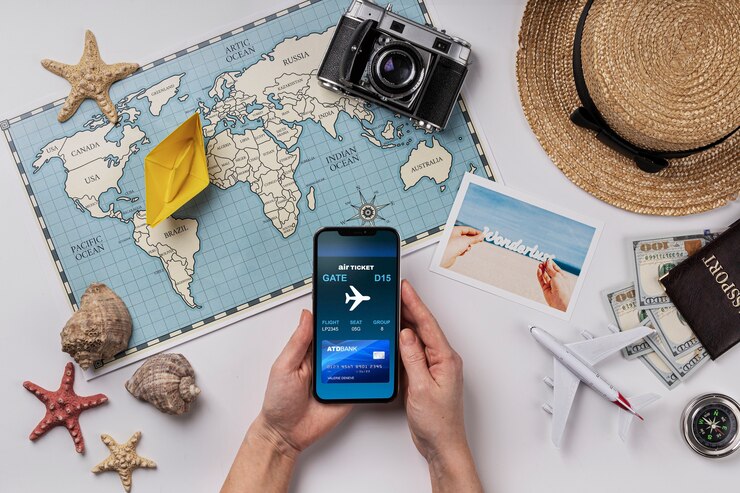Traveling abroad is an exhilarating experience—new places, cultures, cuisines, and friendships await. However, one challenge remains: staying connected in a foreign land. Whether it’s sharing your adventures with loved ones or accessing critical information, staying connected is crucial.
Luckily, modern technology and savvy travel tips make it easier than ever to stay in touch while exploring the world. Here are ten smart ways to ensure you’re never out of reach during your international journeys.
1. Unlock Your Phone
Before landing in the new country, ensure your smartphone is unlocked. An unlocked phone allows you to use local SIM cards in foreign countries. This simple step gives you access to affordable data plans and local calling options, making it easy to stay connected without racking up roaming charges.
2. Use eSIM for Hassle-Free Connectivity
Does your smartphone support eSIM technology? If yes, you can activate a mobile plan digitally without needing a physical SIM card. An eSIM for international travel is a great option for those who travel frequently and visit multiple countries. You don’t need to swap physical SIM cards for this option, and it is easy to activate. It also allows multiple network options on the same device.
3. Utilize Local Wi-Fi Hotspots
Public Wi-Fi hotspots are a lifesaver for travelers on a budget. Airports, cafes, hotels, and even city centers often provide free Wi-Fi access, enabling you to connect without using mobile data. This option is ideal for sending updates, accessing travel guides, or staying in touch with family. However, remember that public networks can be vulnerable to hacking attempts. Always use a VPN (Virtual Private Network) when connecting to public Wi-Fi to protect your personal information.
4. Portable Wi-Fi Devices
Portable Wi-Fi devices, or pocket Wi-Fi, are compact gadgets that provide internet access wherever you go. They’re especially useful for group travel, as multiple devices can connect simultaneously. Pocket Wi-Fi ensures uninterrupted connectivity in areas without public hotspots or where data signals are weak. Many rental services let you book devices ahead of time to pick up upon arrival at your destination. For peace of mind, pocket Wi-Fi is a reliable companion during your travels.
5. Download Messaging Apps
Ditch traditional SMS and opt for messaging apps like WhatsApp, Telegram, or Signal. These apps use internet connections to send texts, make calls, and share multimedia files, saving you money on international texting fees. You can even create groups to stay in touch with multiple friends and family members at once. With features like encrypted messages and video calls, these apps ensure you can stay connected safely and conveniently.
6. Leverage Offline Maps
When exploring unfamiliar territory, offline maps like Google Maps or MAPS.ME are indispensable. Download maps of your destination before leaving the Wi-Fi range. This ensures you can navigate cities, find local attractions, or pinpoint your accommodation without needing an internet connection.
7. Invest in a Power Bank
Nothing’s worse than your phone dying mid-adventure, leaving you stranded without navigation or communication tools. Carry a power bank to keep your devices charged while on the go. Choose one with multiple charging ports and a high battery capacity to stay powered up for hours. Some modern power banks come with solar charging capabilities, making them perfect for outdoor travelers or long journeys.
8. Use Cloud Storage for Sharing Files
Whether you’re sharing travel photos with friends or accessing vital documents, cloud storage is your best friend. Platforms like Google Drive, Dropbox, or iCloud make it easy to upload and access files from anywhere. Just ensure you have internet access when syncing files.
9. Consider Roaming Plans from Your Carrier
Many mobile carriers offer international roaming packages with affordable rates for calls, texts, and data. Research your provider’s options and choose a plan tailored to your destination. While not always the cheapest option, roaming plans can be convenient for short trips.
10. Plan for Emergency Connectivity
Sometimes, connectivity fails despite your best efforts. Prepare for emergencies by carrying a list of important phone numbers, including local embassies, airlines, and emergency services. Pack a basic prepaid phone for backup communication in case your primary devices malfunction or lose signal. Having an emergency plan ensures you can access help quickly, even in remote areas or unexpected situations.
Conclusion
Staying connected while traveling abroad doesn’t have to be stressful or expensive. By adopting these smart strategies, you can enjoy your trip while keeping in touch with the world. From buying an eSIM to leveraging free Wi-Fi hotspots, these solutions ensure uninterrupted connectivity no matter where your adventures take you.
Whether you’re exploring bustling city streets or remote areas, staying connected allows you to make the most of your journey. Remember to balance connectivity with moments of digital detox—sometimes, the best way to experience the world is to put your devices away and immerse yourself fully in your surroundings.
Safe travels and seamless connections await!



